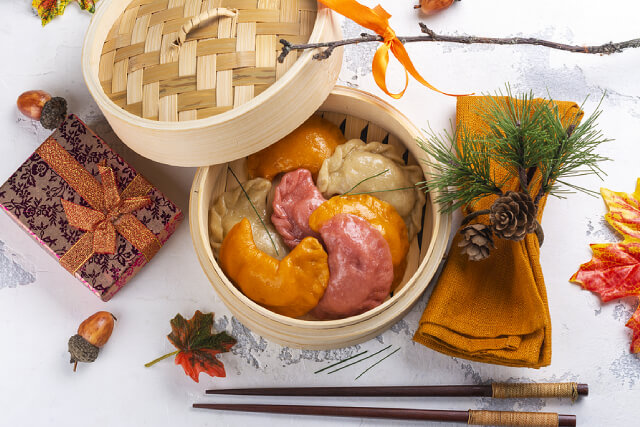Korean desserts have managed to score a place in tourists’ travel checklists when they spent their vacation at South Korea – and it’s little wonder why. Known for its world-class taste and vibrant appeal, taking a bite out of such sweet delicacies is bound to sweeten the rest of your day.
Whether you are just into cute and intricate designed desserts or crave for something slightly simpler yet sophisticated in taste and appearance, trust South Korean desserts to deliver! Explore some of a few decadent and famous Korean desserts, both traditional and modern here!
1. Songpyeon (송편): Rice Cakes
Arguably the most famous traditional Korean dessert out there, Songpyeon are special rice treats during the mid-autumn festival, Chuseok, made to celebrate the year’s bountiful harvest and bless every family member with good health. Made from 100% short grain rice cake dough, Songpyeon are usually filled with various fillings before they’re handshaped and steamed on top of a layer of pine needles. Apart from being a non-stick liner, it was traditionally believed that the ‘chi’ from these pine needles would be absorbed into the rice cakes; thus, giving anybody who eats them the strength and tenacity equivalent to pine trees.
2. Dasik (다식): Tea Cookies
If you’re not fond of overly sweet and decadent treats, then you’re bound to love these Korean tea cookies. Otherwise known as Dasik, these wonderfully light delicacies date back to the 17th century where it served as an accompaniment to traditional tea – a beverage and leisure that only the royalty and nobility.
Depending on the flavour you wish to accomplish, there’s a myriad of base ingredients to choose from, including rice flour, chestnut flour, beans or black sesame. Traditionally, these tea cookies also come in 5 Korean colours – white, yellow, black, green and red, and each colour conveys a specific cultural meaning.
3. Hwajeon (화전): Flower Cakes
Korean traditional aesthetics have always derived from nature, and if you wish to indulge and take a bite of nature, Hwajeon is just the dessert for you! These unique delicacies are essentially rice pancakes topped with edible seasonal flowers, such as Korean azaleas, pear blossoms or wild chrysanthemums. Believed to have dated back in the Goryeo Dynasty, these flower cakes were not simply desserts per se, but they were also considered a true work of art. Women who used to make Hwajeon would use the time to also socialise, dance and write poetry.
4. Hotteok (호떡): Sweet Pancakes
Introduced by Chinese immigrants in the early 1900s, Hotteok are relatively new to the Korean dessert scene. Sold as common street food, these pancakes are especially popular during winter where the filling of brown sugar, cinnamon and nuts is enough to warm you from the inside, all whilst satiating your sweet tooth. Whether thick or thin, rest assured that you can revel in its crispy exterior and tender, chewy interior, no matter what type of Hotteok you choose to indulge in.
5. Patbingsu (팥빙수): Red Beans Shaved Ice
Derived from the name, “red bean ice flakes,” Patbingsu is a popular South Korean dessert that consists mainly of shaved ice, condensed milk and sweet azuki bean paste. It’s also topped with other toppings, such as fresh fruit, nuts, cereals and even ice cream! Raved during the hotter months, many also eat in during the colder months to indulge in its seamless combination of textures and flavours. Originally a street food in the late 1950s, you can get a bowl of Patbingsu even in the most upscale restaurants.
If you’re a sweet connoisseur with plans to head over to South Korea, you would not want to miss out on these indulgent sweet treats. Even though travelling to this beautiful country is heavily limited, you can use this time to prepare for your trip by enrolling in a Korean language school in Singapore! At Sejong Korean Language School, we’re here to ease your travelling so that you can embark in an unforgettable gastronomical adventure!


